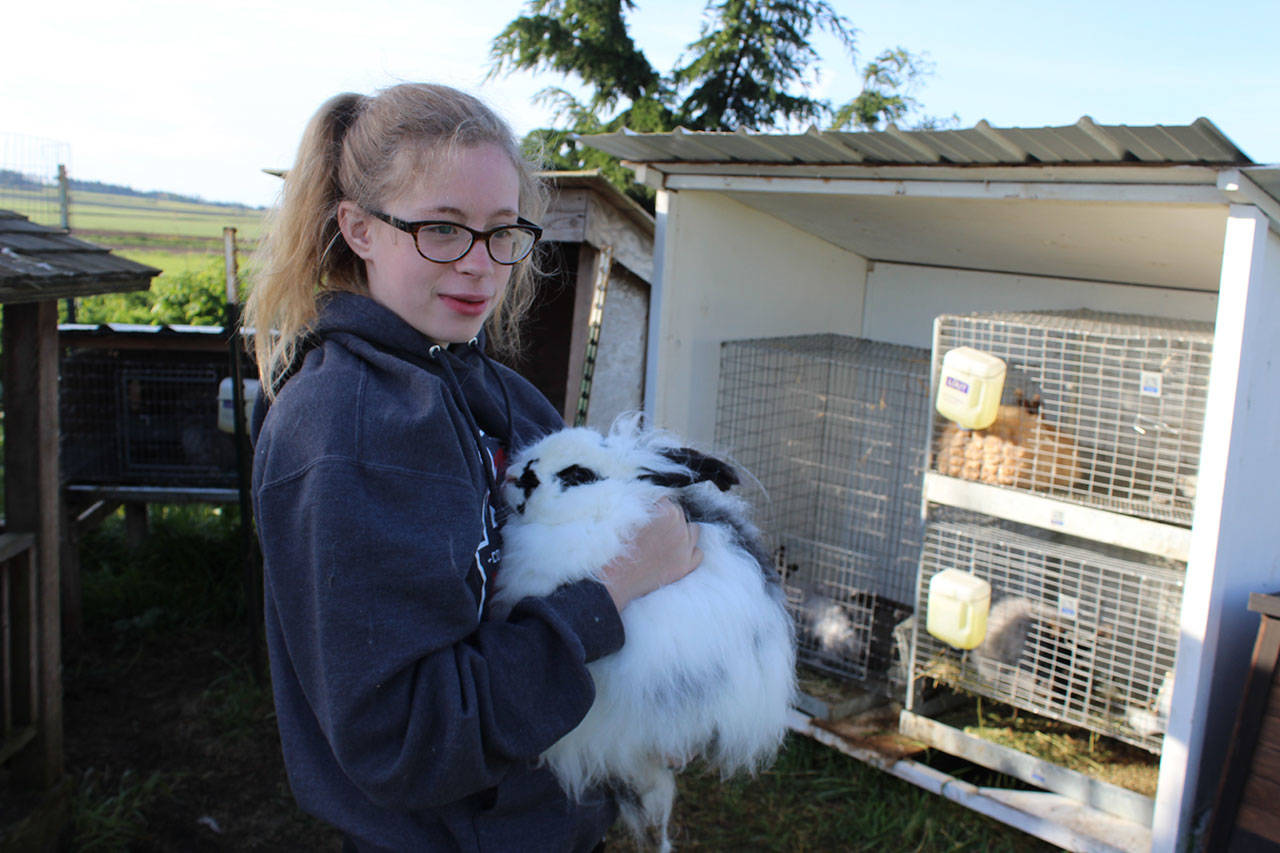A highly contagious disease is wiping out rabbits in British Columbia, and it means bunnies might be missing from this year’s Whidbey Island Fair.
Concern already led Island County to ban rabbits from an upcoming spring show.
“It is strongly likely the kids won’t be able to show the rabbits this year at the fairgrounds,” said Georgie Smith, leader of Kool Kritters 4-H, a Whidbey club focusing on cats, guinea pigs and bunnies of many breeds.
THE WASHINGTON State Department of Agriculture issued several warnings about the deadly virus since its presence was confirmed on Vancouver Island March 8. It’s since jumped to Canada’s mainland.
Called rabbit hemorrhagic disease serotype virus 2, or RHDV2, it’s known to affect domestic and feral European rabbits.
All domestic rabbit breeds originate from the European species. It’s the type of rabbit most commonly used as show animals by 4-H and other hobby groups and it’s bred for meat.
“We are very concerned about RHDV2 and the possible problems if it crosses the border,” said Cathi Mann-Fisher, coordinator of Island County’s 4-H Clubs. “At this time the rabbit division has canceled their spring show and we are waiting on making a decision if 4-H will have rabbits at the fair.”
THE SPRING show, May 20 and 21, acts as a practice run for youth to show their animals before the July 19-22 Whidbey Island Fair.
The disease doesn’t affect North American wild rabbits, such as cottontail and jackrabbits. But it can run through a colony of feral rabbits quickly, killing them within 12 to 36 hours of exposure.
Langley’s infamous flock of feral rabbits — that started when domestic rabbits escaped from the fairgrounds many years ago — are at risk should the virus reach Washington state, which some say is inevitable.
“Viruses don’t respect borders,” Smith pointed out. “It’s continuing to spread south and it’s incredibly contagious. The rabbits will seem fine and then they’re just dead.”
RABBITS DYING by the hundreds in British Columbia are European pet rabbits that had gone feral, said Dr. Lyndon Badcoe, field veterinarian with Washington’s state animal health program.
State agricultural officials have warned owners of pet rabbits to take precautions but they haven’t suggested the animals be banned from any fairs or events.
“There’s no evidence of this disease in Washington state,” said Hector Castro, WSDA communications director.
“Essentially we’re telling people to make sure to practice really good bio security.”
Those measures include keeping a new rabbit separate from other rabbits for two weeks, restricting human visitors, frequently disinfecting cages and reducing exposure to flies, mosquitoes and fleas.
MEMBERS OF Whidbey’s Kool Kritter 4-H club are taking the threat to their furry friends seriously.
“The club is focusing on bio security,” said Smith. “We’re putting mosquito netting on cages and trying to keep our rabbits safe.”
The disease has a 98 percent mortality rate. Fatal only to rabbits, there’s no vaccine against it available in the U.S.
“While the disease does not affect humans, it can spread through contaminated clothing or vehicles, or other animal handling equipment,” Badcoe explained. Biting insects, birds, rodents and wild animals spread the virus but don’t get sickened by it, he said.
THE OUTBREAKstarted in February when dozens of dead feral rabbits were found near or at the Nanaimo campus of Vancouver Island University.
On April 12, 66 rabbits housed at a no-kill animal shelter in Richmond, B.C., south of Vancouver, were euthanized because two feral rabbits that died on the property apparently spread the infection to shelter rabbits.
All of the cages and infrastructure used to shelter the rabbits were ordered to be incinerated by government officials.
The scare also promoted the Greater Vancouver Zoo to cancel planned bunny activities over Easter and to place its rabbits under prolonged quarantine.
The virus could next jump to the San Juan Islands, home to large populations of non-native, domestic European rabbits introduced more than a century ago.
“It seems to spread easily, and I wouldn’t be surprised if it moved from Vancouver Island into the San Juans,” said SeaDoc Society Science Director Joe Gaydos, VMD, Ph.D. in a recent article of the San Juan Journal.
OUTBREAKS OFrabbit hemorrhagic disease occurred in 2000 in Iowa and in 2001 in Michigan, New York and Utah. The outbreaks were restricted to small groups of affected rabbits. However, the virus strain found in Canada, RHDV2, has never been reported in the U.S.
The hemorrhagic disease kills rabbits much the same way Ebola kills humans — by affecting blood vessels and attacking the liver and other organs, causing hemorrhages.
Signs a rabbit may be infected include lack of appetite, lack of coordination, difficulty breathing, listlessness and congested membranes around the eyes.
It’s advised a veterinarian be immediately consulted if a pet rabbit exhibits these symptoms.
The virus can survive and remain infectious for months. So even if no new cases are reported for weeks, precautions must still be taken.
HELGA’S FUZZYBUTTS Rabbitry owner Helga Falconer says she and her children aren’t doing any shows because of the potential threat. They raise many rabbit breeds for pets, show and for meat on North Whidbey.
“To me, it’s just not worth it to take them to a show or the fair,” she said. “And I’m not bringing any rabbits in because you just don’t know.”
Smith said the Kool Kritter 4-H members who raise rabbits are “going forward with the hope we will be able to show. “
“It will be a huge disappointment if we can’t show at the fair,” she said. “That’s what this club is all about.”
• A sudden unexplained increase in deaths among feral rabbits should be reported to the Washington State Department of Agriculture at 360-902-1878 or 1-800-606-3056.



